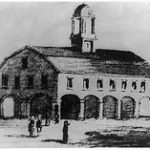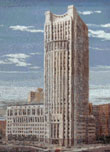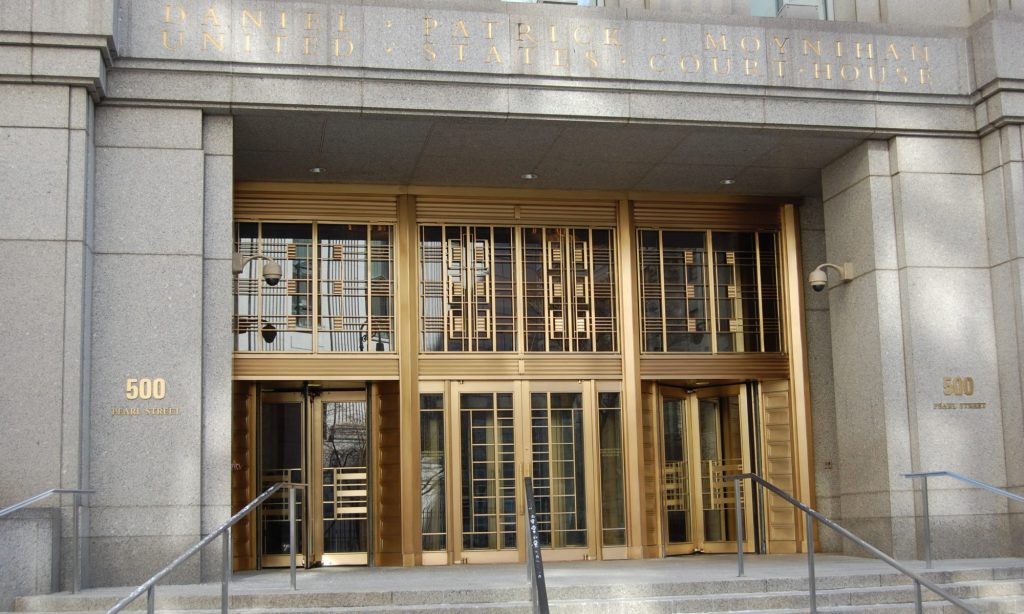Learn about the “Mother Court,” the District Court for the Southern District of New York
If you spend any time in the Civic Center in lower Manhattan, you’re probably familiar with the 23-year-old high-rise building at 500 Pearl Street. Located 1/2 block from Foley Square, the most prominent resident of this building is the United States District Court for the Southern District of New York. It is the largest and busiest federal court in the country.
The Oldest District in the Nation
Sometimes called the “Mother Court,” the District Court for the Southern District of New York is 230 years old. It was the first court established under the United States Constitution and is a few months older than the United States Supreme Court.
 In its early years, the court was known as the “District of New York” and had jurisdiction over the entire state of New York. The court’s first session was held on November 3, 1789, at the Old Royal Exchange in lower Manhattan. Judge James Duane, appointed by President George Washington, was the first presiding judge. He was paid about $1,500 per year.
In its early years, the court was known as the “District of New York” and had jurisdiction over the entire state of New York. The court’s first session was held on November 3, 1789, at the Old Royal Exchange in lower Manhattan. Judge James Duane, appointed by President George Washington, was the first presiding judge. He was paid about $1,500 per year.
In 1812, the District of New York became the Southern District and the northern counties became the Northern District. The state has since been further divided into Southern District, Northern District, Eastern District, and Western District.
Civil and Criminal
Today, the Southern District of New York encompasses the counties of New York, Bronx, Westchester, Rockland, Putnam, Orange, Dutchess, and Sullivan. The court has jurisdiction over civil or criminal matters that fall under federal law. Criminal cases include cyber crime, mortgage fraud, public corruption, organized crime, narcotics trafficking, and civil rights violations.
One of 94 United States district courts, the Southern District has jurisdiction over New York’s major financial centers. Several financial fraud cases—including those against Bernie Madoff, Ivan Boesky, and Michael Milken—have been heard in this court.
Civil cases may involve copyright, personal injury, insurance, labor, civil rights, or real estate lawsuits. Criminal and civil cases may be tried at either the Manhattan or White Plains Courthouse.
In the past 30 days, there were approximately 600 cases filed in the Southern District Court, with litigation ranging from bankruptcy and intellectual property to prisoner petitions and immigration. It is the largest and busiest federal trial court in the country. At any given time, there might be more than 150,000 total open civil cases in the court system.
Can You File Your Pro Se Case in District Court?
A significant number of cases in the Southern District are pro se tenant and employment discrimination proceedings.
If you are considering filing a pro se lawsuit, your first step should be to visit the District website to get familiar with the rules and various forms. The Pro Se Intake Unit offers information and resources to assist those who are representing themselves, including a new rule regarding the electronic case filing (ECF) system.
Pro se litigants must file in-person or by mail, but once received, the Pro Se Intake Unit staff will scan and docket your filing onto the court’s ECF system and email all other parties’ attorneys to notify them of the document filing.
When visiting the Courthouse, be prepared to go through a security check. Also, cell phones, cameras, and recorders are not allowed.
For more information, you may contact the Pro Se Intake Unit:
United States District Court of the Southern District of New York
Pro Se Intake Unit
Thurgood Marshall U.S. Courthouse
40 Foley Square, Room 105
New York, New York 10007
(212) 805-0175
It’s a Long Process
 Once you have filed your civil suit, you can expect to wait months for the trial date. Civil cases are scheduled for trial a year or more after the papers are filed. Criminal trials are scheduled sooner because the defendant has “a right to a speedy trial.”
Once you have filed your civil suit, you can expect to wait months for the trial date. Civil cases are scheduled for trial a year or more after the papers are filed. Criminal trials are scheduled sooner because the defendant has “a right to a speedy trial.”
During the months between filing your lawsuit and appearing in court, all of the pre-trial work will be completed. If you have an attorney, he/she will prepare your case, conduct discovery, hold depositions, etc. If you are pro se, you will be responsible for doing all of this yourself.
According to New York law, once you have filed your complaint, the defendant has 21 days to answer it. If the defendant is a federal agency or employee, they will have 60 days. Once they have answered your complaint, you both start the discovery process. The purpose of discovery is to find the facts of the case. Both sides can ask questions or request documents. This process can take several months.
After discovery, you can schedule depositions to record testimony from witnesses or experts. You or your attorney will also want to hire a court reporter to record the depositions. This will create an official record of proceedings that can be referred to at trial.
It’s important to note that the majority of civil cases, whether they are proceeding pro se or with an attorney, are settled out-of-court and never even make it to trial. The stronger your pre-trial preparation, the higher your chance of a successful outcome.
A Colorful Past
Whether you win or lose, if you find yourself at a trial under the jurisdiction of the historic Southern District of New York, you’ll be in remarkable company. Here are a few glimpses into the past:
Prohibition and the Volstead Act (1919-34)
Judge J.C. Knox
Reflecting on the 23,167 alcohol-related cases in the three-year period ending June 30, 1930, Judge Knox wrote, “cases came by tens, by hundreds, and then by thousands. The courts came to be so overwhelmed with such work that we were forced, in order to clear the dockets of enormous accumulation, to hold ‘bargain days’ on which almost anyone who would plead guilty would be let off with some trifling fine…There were not enough judges or juries available to handle properly more than a fraction of the work that came to us.”
Morris, Federal Justice in the Second Circuit 125-28 (1987) J.C. Knox, A Judge Comes of Age 157 (1940)
United States v. New York Times Co. (Pentagon Papers)
Judge Murray I. Gurfein
On June 13, 1971, the New York Times began publishing a series of articles about a classified Department of Defense study on the Vietnam War in Vietnam. Daniel Ellsberg, an author of the study, had secretly provided the study and the government tried to block the publication. Judge Gurfein, in his first week as a judge of the District Court, denied the government’s request for a preliminary injunction and wrote, “A cantankerous press, an obstinate press, a ubiquitous press must be suffered by those in authority in order to preserve the even greater values of freedom of expression and the right of the people to know.”
http://law2.umkc.edu/faculty/projects/ftrials/ellsberg/ellsberghome.html
328 F.Supp. 324 (1971)
Bright Tunes Music Corp. v. Harrisongs Music, Ltd. (George Harrison’s “My Sweet Lord”)
Judge Richard Owen
In 1970, shortly after the break-up of The Beatles, George Harrison, one of its members, penned a hit song titled “My Sweet Lord.” Ronald Mack, a composer, sued Harrison for copyright infringement, claiming that Harrison copied the music for “My Sweet Lord” from Mack’s No. 1 Billboard hit “He’s So Fine.” After a bench trial, at which both songs were played by a pianist, Judge Owen found that, though it may not have been deliberate, Harrison had plagiarized “He’s So Fine” in creating “My Sweet Lord.” Judge Owen’s copyright finding was affirmed by the Second Circuit.
420 F. Supp. 177 (S.D.N.Y. 1976)
Read about more high-profile cases on the Southern District of New York’s website

